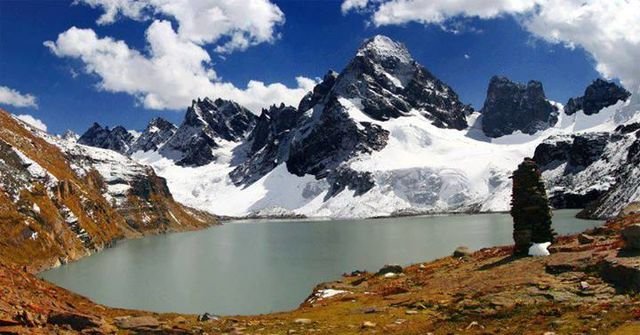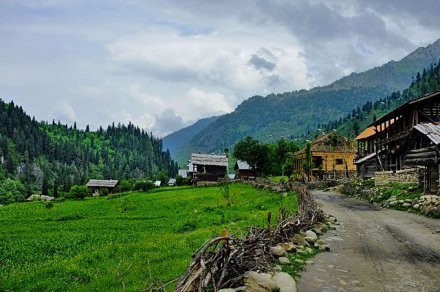The most important bilateral conflict in the Indian subcontinent is the India-Pakistan conflict and the Kashmir issue is one of the main reasons for this conflict. The Kashmir region is currently divided between India, Pakistan and China. India claims Pakistan-controlled Kashmir and China-controlled Kashmir as its own land. Pakistan claims Indian-controlled Kashmir as its own land. China claims the Ladakh region of India-controlled Kashmir as its own territory.
As much as there is talk of India-controlled Kashmir in the international (and Bangladeshi) media, there is almost no discussion of Pakistan-controlled Kashmir. Pakistan-controlled Kashmir is currently divided into two parts - 'Azad Jammu and Kashmir' (abbreviated 'Azad Kashmir') and 'Gilgit-Baltistan'. The topic of this article is 'Azad Jammu and Kashmir'.
Azad Jammu and Kashmir is bounded on the north by Gilgit-Baltistan, on the west by the Khyber Pakhtunkhwa province of Pakistan, on the south by the Punjab province of Pakistan and on the east by the Union Territory of Jammu and Kashmir in India. Azad Jammu and Kashmir covers an area of 13,296 sq km. And according to the 2017 census, the population is about 44 lakh 50 thousand. Muzaffarabad is the capital and largest city of Azad Jammu and Kashmir. The city is home to about 1.5 million people.
Muslims make up more than 99 percent of the population of Azad Jammu and Kashmir, although there are between 20,000 and 25,000 Ahmadis and about 4,500 Christians in the region. From an ethnographic point of view, the majority of the inhabitants of Azad Jammu and Kashmir are not associated with the ethnic Kashmiris of the Kashmir Valley, but they are associated with the inhabitants of Jammu and Punjab. Azad Jammu and Kashmir is inhabited by people of Gujjar (or Gurjar), Sudhan, Jat, Rajput, Mughal, Awan, Abbasi and other communities.Ethnic Kashmiris are a minority in Azad Jammu and Kashmir and live in the main Nilam and Lipa valleys.
The official language of Azad Jammu and Kashmir is Urdu and English is used in government work and higher education. But apart from Urdu, at least half a dozen languages are spoken in the region, including Pahari, Gojri, Punjabi, Kohistani, Pashto and Kashmiri.

Source
The economy of Azad Jammu and Kashmir is mainly agricultural and the rate of industrialization in the region is very limited. Apart from agriculture, the service sector, tourism and remittances from expatriates are the main sources of income in the region. The hilly north of Azad Jammu and Kashmir and the southern part of the plains are full of beautiful natural beauty and it especially attracts tourists.
Administratively, Azad Jammu and Kashmir is divided into 3 divisions - Muzaffarabad, Mirpur and Poonch. These divisions are again divided into 10 districts. Mirpur and Punch divisions 'Jammu and Kashmir' were part of the native state of Jammu and the Muzaffarabad division was part of the province of Kashmir. That is, parts of both Greater Jammu and Greater Kashmir are in Azad Jammu and Kashmir.
Officially, 'Azad Jammu and Kashmir' or 'Free Jammu and Kashmir' is an 'independent' and 'autonomous' state, whose security is vested in Pakistan and which is administratively and economically attached to Pakistan. The region has its own national flag, the President, the Prime Minister, the Legislature, the High Court and the Supreme Court. Azad is the current president of Jammu and Kashmir, Masood Khan, and the prime minister is Raja Farooq Haider Khan, a member of the Pakistan Muslim League (Nawaz) or PML (N).
